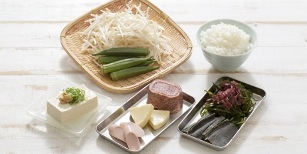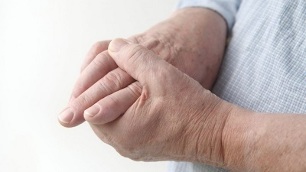
Gout was scientifically proven in 1865. The disease is described by Thomas Sendegum in a book on gout, in which he describes the signs, symptoms, and attacks of the disease for 30 years.
In the time of Hippocrates, this was called the "disease of kings. "The reasons are considered: excessive and non-discriminatory food and alcohol consumption.
What is gout
Gout is a pathology associated with the deposition of salts in the joints and kidneys, and is characterized by severe pain in these areas. The progression of the disease leads to recurrent and increasing seizures, which lead to the formation of tophi. These are the knots that cause a change in the shape of the joints. There is a consistent development of urolithiasis and renal failure.
Diagnosis is made by collecting synovial fluid and detecting urate in it. X-rays of the affected joints are also performed. When inflammation is eliminated, nutrition is normalized, and uric acid is reduced, it can lead to positive results in treatment.
The disease is more common in men after 40 years. Female pathologies are observed in the postmenstrual period. Joint damage occurs all over the body, but most commonly in the legs.
The main causes of gout:
- heredity;
- eating large amounts of purine foods;
- weak excretion of uric acid from the body;
- purine nuclide catabolism.
Basics of Gout Diet
The development of gout depends on metabolic diseases in the body. Diet is an effective way to treat. Good nutrition should be monitored daily. The main principle of the gout diet is to reduce blood salts. The kidneys will no longer be able to function on their own. Failure to follow a diet can lead to relapses. An attack of pain can begin at any time. This often happens at night. If you do not follow a diet, the disease can develop and spread to all joints.
Treatment should be done at home. Includes adherence to a balanced diet. This is considered a basic and effective method. The menu is designed by the attending physician, taking into account the individual characteristics of the patient. Diet is important to reduce uric acid levels.
Features of the diet for gout

Purines should not be included in the diet of gout, they help to accumulate acids. Purines are found in meat and fatty foods. Therefore, gout patients are advised to eat more vegetarian food. There are no expensive ingredients in the recipes and the cooking technique is not difficult. But it is important to combine only the allowed foods.
Nutrition therapy can help treat gout symptoms at home.
Eating fatty and spicy foods causes an increase in uric acid and an attack associated with severe pain. For example, drinking too much coffee with high levels of purine can lead to relapse. High-risk foods include alcohol, beer, fizzy drinks and even grapes. They are completely excluded from the diet of the sick person.
In order to quickly remove purines from the body, the patient is prescribed a heavy drinking regimen. The amount of fluid consumed daily reaches 2. 5 liters. In the case of urolithiasis, alkaline and sodium bicarbonate water is required. It is possible to achieve urine neutralization with an abundance of plant proteins and citrus fruits in the diet.
Diet for gout in the legs
Gout diet should always be followed. Since the treatment is carried out at home, the person suffering from the disease must have the willpower and not violate the prepared menu. Depending on the patient's condition, an individual menu is created with permitted and prohibited products. Dishes can be delicious and varied despite their simplicity. The diet for gout in the legs does not have very strict restrictions, but the patient should saturate the body and promote a healthy lifestyle.

Dietary Mistakes in Disease:
- eating foods containing purines;
- alcohol abuse;
- lack of fluid in the diet;
- large amounts of animal fat;
- excess consumption of animal proteins;
- salt and acid;
- Small amounts of vegetables and fruits in the daily diet.
Foods allowed and forbidden in the gout diet
In addition to the basic treatment, the gout diet should include information about allowed and forbidden foods. It is impossible to treat this disease or eliminate the symptoms without following the rules of nutrition.
Prohibited Products:
- bakery products, ie rich products;
- meat (beef, lamb, pork, sausage);
- seafood (types of fats);
- salty and spicy milk;
- legumes;
- vegetables (sorrel, mushrooms);
- fruits (grapes, raspberries, figs);
- mayonnaise;
- confectionery and pastries;
- animal fats;
- alcoholic beverages;
- black tea, coffee;
- sauces (mustard, horseradish);
- spices and herbs.
Attention!The above products should not be consumed or added to the patient's diet!
The gout menu may seem boring and tasteless at first glance. In fact, this is not the case.
There is a list of products allowed for consumption without health risks:
- bakery products - uneasy pastries;
- meat - rabbit and chicken;
- boiled fish meat (low-fat varieties);
- eggs (1 per day);
- dairy products (low fat and not salty);
- not legumes;
- vegetables (potatoes, carrots, onions, garlic, tomatoes);
- fruits (green apples, apricots, tangerines);
- vegetable oils;
- Fruit teas, natural juices from approved products.
You can also change your diet with seeds and nuts:
- walnut;
- cedar;
- almonds;
- hazelnuts;
- pistachio.
Peanuts are rich in purine and should therefore be excluded from the diet.
This is interesting!Scientists have debated the use of tomatoes in the patient's diet. After all, they contain a small amount of oxalic acid. Red vegetables have been shown to be harmless, but beneficial due to antioxidants and phytoncides. Eliminate inflammation that is common with gout. It turns out that tomatoes can be eaten with any amount of gout.
Contraindications to gout

The most popular foods are contraindicated in the gout diet. Due to chronic pathology, you can and should get used to fat-free dishes, as it aims to relieve symptoms and significantly reduce pain. Diet should always be followed. Because a cup of coffee or grapes can cause pain.
During the exacerbation of gout, medication is used in accordance with the diet. Bed rest is also required. All this stops the inflammatory process. When preparing meals for the patient, it is better to put a table in a conspicuous place with the allowed and forbidden foods.
Limit meat and fish consumption to twice a week. According to doctors, fish should be eaten with clay and scales. These fish by-products are excellent at removing toxins from the body. In case of pain attack, the use of these products is delayed for several weeks.
Semi-finished products and canned foods are completely contraindicated. Diet No. 6 prohibits the use of broths. After all, soups and borscht are made on their basis. The fact is that this exception is quite justified by the addition of various spices and seasonings that can cause an attack. It would be better to cook the meat separately and use the broth under the vegetables as a broth. During the cooking process, the water is drained and changed several times. It reduces the concentration and removes purines.
Diet for gout: weekly menu
The disease cannot be cured, especially if it develops with pathological diabetes or obesity. A special diet is used to reduce recurrences and exacerbations of gout - Table 6.

The gout diet can always be followed, although the menu is designed for a week. The diet is prepared by the attending physician.
There are several options for such a diet that do not differ much from each other. The process uses traditional cooking technology.
Monday
- corn syrup tea, boiled eggs, tomato salad, rye bread;
- freshly squeezed apple juice, cooked vegetables;
- beet salad, boiled turkey, baked pumpkin, compote;
- boiled potatoes with cheese, salad with cabbage, hips tincture.
- kefir.
Tuesday
- cottage cheese pudding with sour cream, green tea with honey;
- wholemeal cookies, chicory drink;
- vegetable noodle soup, steamed chicken cutlets, fruit drink;
- vegetable stew, compote;
- whipped milk.
Wednesday
- pumpkin pancakes, buckwheat in milk, tea;
- green apple;
- vegetable and rice soup, boiled cod, beet salad, carrot juice;
- casserole, buckwheat with apple juice, biscuit liver;
- wheat bran decoction.
Thursday
- borscht without meat, milk, croutons;
- cheese, toast with chamomile tea;
- mashed potatoes with meatballs, potato pancakes, pancakes, compote;
- baked pumpkin, fruit salad, milk tea;
- fermented boiled milk.
Friday
- oatmeal, vegetable salad, cherry juice;
- watermelon, lemon, strawberry and pear smoothies, bread;
- mashed potatoes, rabbit casserole, cabbage salad, tea;
- boiled eggs, barley soup, jelly;
- Baked apple with cottage cheese, hip tea.
Saturday
- wheat porridge, chicory drink;
- ginger bread with kefir;
- buckwheat, eggplant caviar, chicken boiled with tea;
- diet pilaf, cucumber salad, bread, jelly;
- varenets.
Market
- cottage cheese casserole, cottage cheese pancakes, tea;
- quail egg omelet (4 pieces);
- cheese puree soup, garlic toast, hip tea;
- cooked vegetable rice, beet salad;
- yogurt.
This is a rough menu without foods that are forbidden for people with gout. A balanced and complete diet allows you to use it for a long time. Fasting days are necessary to achieve a greater effect.
Diet for gout: review by nutritionists

The review of the professor of the department of gastroenterology and dietetics is as follows. Diet is the main treatment for gout with the ineffectiveness of drug treatment.
The severity of the process affects the nutritional approaches in the treatment of patients, ie:
- seizure frequency;
- plasma uric acid levels;
- patient's body weight.
The amount of purines, fats, proteins, sodium salts and alcohol in the diet should be minimized.
Eating a diet quickly reduces plasma uric acid and restores normal levels. Effective and therapeutic effect based on natural ingredients.














































































